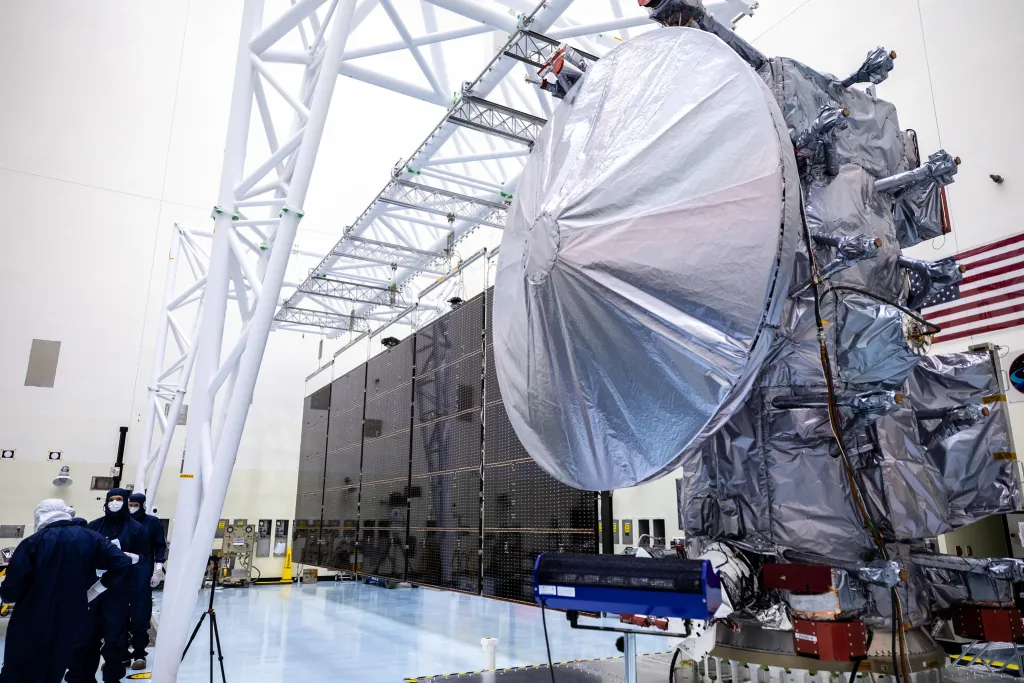
Jupiter is the largest planet in the solar system. Jupiter also has many moons worth noting. NASA has taken an interest in one of these moons named Europa. NASA plans to launch a space probe sometime this month named the Europa Clipper.
The Europa Clipper is the largest spacecraft NASA has built for a planetary mission. The solar panels will power the conduction of detailed investigations of Europa’s icy surface. The spacecraft will orbit Jupiter and make nearly 50 flybys (passes) of Europa. At first, this sounds awesome! It’s unfortunate though that it will be 2030 when the spacecraft reaches its destination. The spacecraft will launch from a SpaceX Falcon Heavy rocket in October. The Europa Clipper will pass by Mars, then back to Earth, and use the Earth’s gravity as momentum to reach Jupiter. The spacecraft itself is incredibly large and complicated. When its solar arrays (solar panels) are open, the Europa Clipper has an impressive length of about 100 feet. The main body of the spacecraft consists of its avionics vault (instruments), radiofrequency module (communication), and propulsion module (rocket). At launch, Europa Clipper will weigh approximately 13,000 pounds. Almost half of the weight will be fuel – nearly 6,000 pounds of propellant. The instruments the spacecraft will be carrying are the most advanced and sensitive to ever explore
the outer solar system.
Only one question remains: “Why?” The Europa Clipper costs about 5.2 billion dollars so will it be worth it? The answer simply lies within life. Usually the main purpose of space missions is to find life outside of Earth. Europa could have this life. Specifically, Europa’s icy oceans could have life. Although Europa won’t be able to detect life, it will be able to see if Europa’s oceans are inhabitable.
The window for launch starts on October 10th, and ends on November 7th. The planned date for launch was October 10th, but due to Hurricane Milton, there will most likely be a delay. However, when Europa is launched and starts its mission, the findings will definitely be amazing and possibly groundbreaking.
https://europa.nasa.gov/spacecraft/meet-europa-clipper/
https://blogs.nasa.gov/europaclipper/
Your donation will support the student journalists of Galileo Magnet High School. Your contribution will allow us to purchase equipment and cover our annual website hosting costs.












